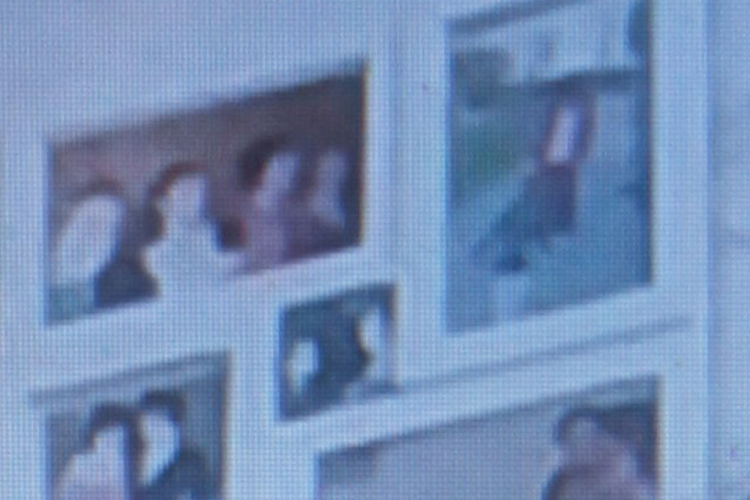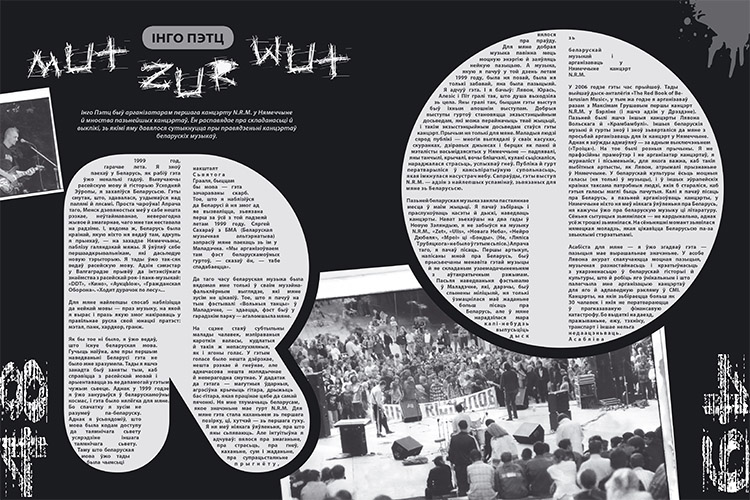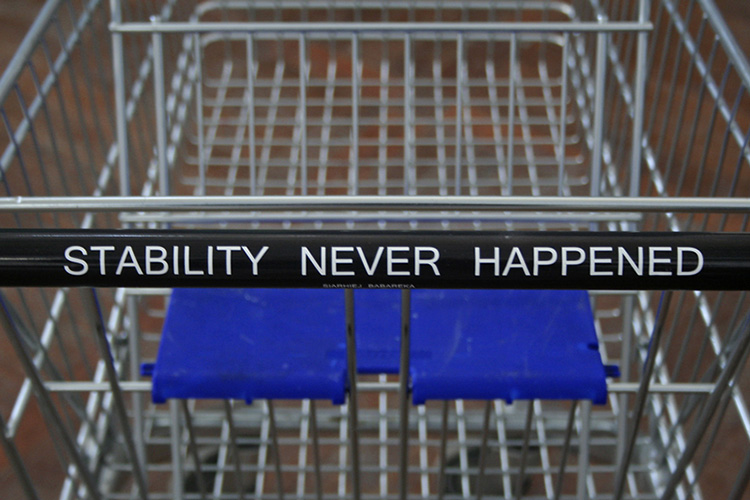
Аўтар: Volha Bubić, 18/07/2014 | ART Cult Aktivist interview
SIARHEI HUDZILIN: BELARUS IS A MULTICULTURAL CHAOS
On June 23, 2014 «Belarus Press Photo-2014» results were announced — the most controversial, but yet the only one existing competition for photojournalists in our country. It was constantly predicted to have a short lifetime, overslaughed by lawsuits, but already for the fifth year the contest continues to regularly reflect through the language of media the most historically and culturally significant events of the past year. Despite the negative connotation that profession of a photojournalist has in Belarus, the front of those who still firmly hold their cameras in their hands in such extreme conditions remains unchanged lately.
It is not for the first time that among the winners of «Belarus Press Photo» we find the name of Siarhei Hudzilin — a photographer from «the first Belarusian newspaper», a man who truly loves his job and goes on documenting our routine, asking himself and the audience questions that deal with a very sensitive and yet necessary issue — the Belarusian national identity.
In his interviews Siarhei calls Belarus «one of the most unphotographed countries in the world» and through his own projects tries to have this state of affairs modified. In the course of 8 professional years he has made huge steps from a boyish story about the closed military subculture into the project entitled «The Edge of Belarus», where the whole country becomes the object of his attention.
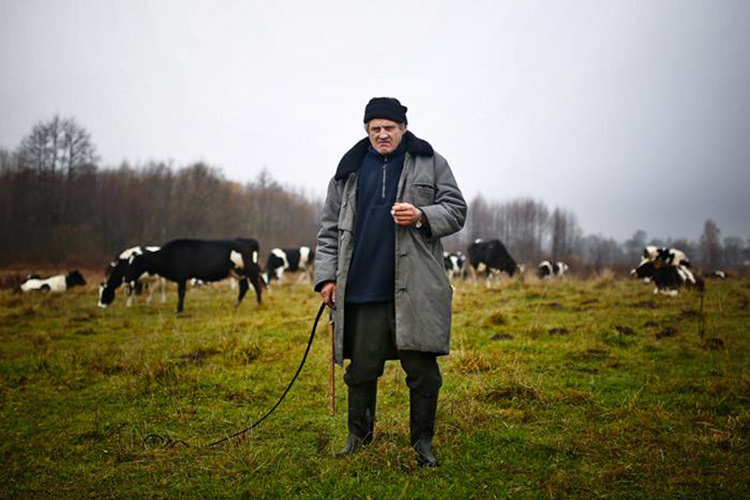
Siarhei Hudzilin’s photography «Shepherd» that was awarded the 1st place in the nomination «Observed Portraits (singles) in «Belarus Press Photo-2014»
In a good sense «patriotic» project Siarhei Hudzilin has been working at for the past few years is praiseworthy ambitious and large-scale. It is based on the idea of a kind of Belarussian atlas, an illustrative calendar that would visually represent the movement of the changing seasons in the most remote settlements of Belarus. Thus, the name given to the project by the author — «The Edge of Belarus» — also receives several interpretations. «The Edge» stands for the country where we live. «The Edge» also means the geographically extreme points of north, south, east and west. The photographer explains:
«The idea was also to describe the extremes of our lives. The extremes of the Belarussian routine. To outline, describe and understand them. Belarus is one of the most unphotographed countries in the world. And I am trying to grasp it approaching it from suburbs. This, of course, was one of the easiest things to do. And, at first glance, might seem to be even not very smart …. Just visit one part of the country, then another one, the third and the fourth. Just watch what is happening there. The idea is to make a really very bright illustrative calendar. A sort of atlas».
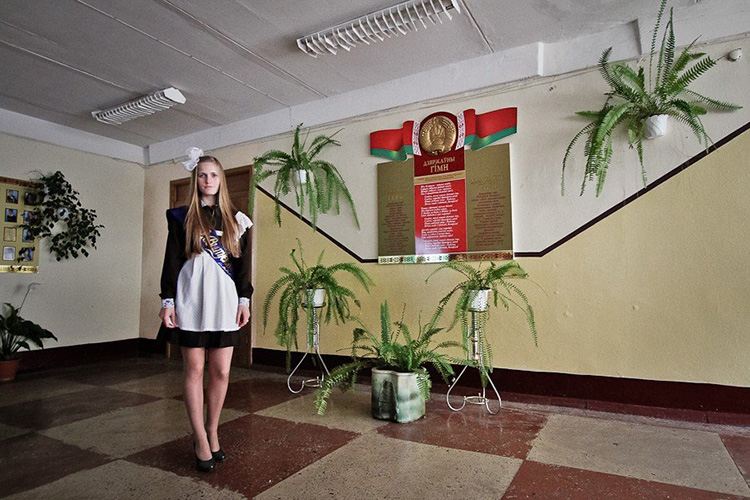
Siarhei Hudzilin’s photography from the series «School-leavers 2012»
Since the winter of 2012 Siarhei Hudzilin has already visited four geographically extreme settlements of Belarus, taking photos and videos, recording sounds, voices and stories of strangers. For around a week he had been living in towns he found on the Internet and in encyclopedias in the course of preparation. In Asveja (the northern destination point of the project) Siarhei shot a story of a couple of stokers. In Kamaryn — a town of Palesse area — he photographed the events of the Victory Day, whereas in the once prosperous Vysokae — an accidentally encountered weird wedding with a small orchestra in a local park. The photographer admits that, despite the significant research done prior to every journey, he does his best not to limit his vision with preconceived stereotypes and ready-made plots.
«There is always a desire to meet stories on the go. They find me on their own unexpectedly giving me a click — says Siarhei. — Certainly, there is some set of phases I usually need: social sphere, entertainment, personal life, old age. Or ageing and youth. But usually these pieces manifest themselves later on».
Recalling the first part of his project, Siarhei speaks about five days he spent in the February Asveja — the largest settlement in the north of Belarus, located after Verkhnjadzvinsk, 5 kilometers from the border with Russia and Latvia:
«In Asveja I settled at one of «Nasha Niva«’s subscribers’ — an old lady who had been subscribed to our newspaper for quite a long time. She was living there in an apartment in a Soviet brick barrack where there used to be some industrial enterprise. Well, I arrived to this Asveja and started walking back and forth, shooting whatever I saw: landscapes, destroyed buildings… getting into conversations with random people at the level of: «Give me a cigarette!» — «Who are you?» In such cases you need to be able to chat like Belarusian radio realizing that further efficiency of your work depends on it. «I am a photographer … My name is Siarhei. I live there and there, and I shot things like that… I travel around Belarus». Such nonsense, repeated twenty times a day in talks with different people.
That was how, straight in the street, I met a family of stokers who became protagonists of my story. The husband was coming home from work, we made friends and went to his house together. He takes alcohol with his wife at home, they drink when they go out, they drink at work. In general, this is how I spent the whole day with them».
A special impression from the journey to Asveja, which, however, would remain only in Siarhei’s memory was a meeting with local elderly ladies (or «babulkas» as he tenderly calls them in Belarussian) who, according to unwritten ancient Belarusian traditions, were weekly visiting the cemetery to remember their ancestors. «There was a babulka … she went on to recite a prayer, to mourn … This is when they just cry out loud for the dead … And it touched me so deeply… It was on a frosty February day. That lonely figure at the cemetery. And that piercing mourning as the most powerful thing in life that I had ever seen.
Maybe it is not so emotional as a terrorist attack in Minsk subway or the topic of Maidan. But in me personally, this babulka caught and touched something much bigger. It was that very way of life, the culture of those lands documented by no-one. Now my only regret is that I could not record the audio of this mourning. I do have a few photos, but the audio would remain only in my head …»
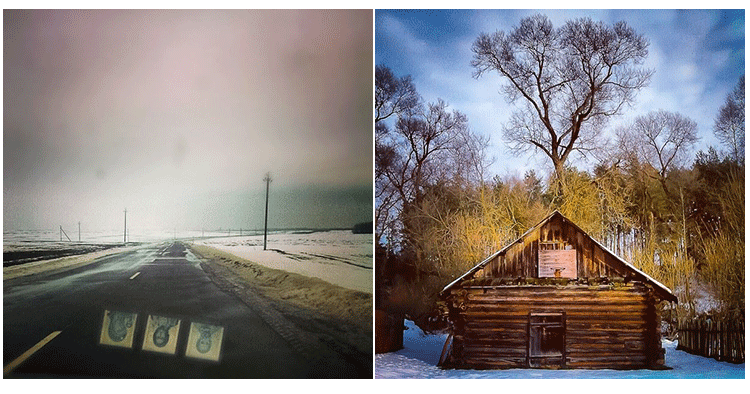
Siarhei Hudzilin’s photography from the series «Instavillage»
Siarhei Hudzilin came across a completely different kind of story during his trip to the Belarussian west visiting the town called Vysokae. He remarks that the geographical proximity with Poland, with some entrepreneurial skills of the local people made a favorable impact on the overall economic state of the area. «To put it short, it used to be a very rich place», — says Siarhei. Over time the profitable gasoline trade with Poland was banned, but the fact of fast money and the consequent burning desire to show off their well-being could not but affect the specific cultural features of the town’s inhabitants. The photographer remembers that when he was still getting ready for his trip, he was originally planning to photograph a local wedding. Keeping this goal in mind, he sent numerous messages to unknown users of social networks, whose graph of residence contained the name of Vysokae.
«Hello, I am a Belarussian photographer. I work there and there … » — this was how I was sending spam to around 100-150 people. It was my preparation, — Siarhei smiles. — I was just looking for the appropriate age category, or fishing out frequently used accounts. There was a kind of friend who was supposed to arrange a wedding, but soon I got a refusal from her.
Then I was walking around this town, and out of the blue — there it was! A small orchestra playing small violins in the park, artificial arches, guests. A sort of rich stuff. A cool wedding! And as much as 4 photographers working hard! So the way photos of such cool weddings are made became my main subject. Certainly, the stylistics was rather second-rate. Not the images of a bride sitting on a groom’s palm, but the tricks they used … actually, the essence of my own shooting was to photograph these tricks. How people represent themselves, how they want to be seen.
It is also a part of the Belarussian mentality, which I look at from the edges trying to understand this country».
Explaining his interest in cultural phenomena of Belarus as in a subject-matter of his own visual research, Siarhei recalls how badly he felt the need to work with local contexts in the times of the recent Ukrainian events: «When Maidan started, a lot of Belarusian photographers rushed there to shoot. As for me, I did not feel the topic there, I just could not understand it photographically. Clearly, the events evolving there were really cool and impressive, it is good how the whole nation was able to organize it all, to resist and supposedly win. Or at what price. But it had no click for me. … I knew that the events would be shot and they would be shot at a due level…
As for my own photography, I have more of nationalism in it. I am interested in our own, local issues. To be aware of them is not enough. They should be described and explained. This is what I am dealing with».
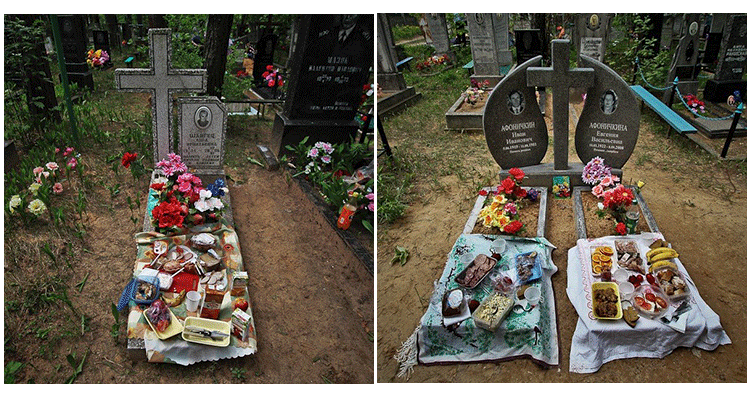
Siarhei Hudzilin’s photography from the series «Menu for the Ancestors»
Naturally, moving around the country so often and being in such a close contact with ordinary people who do not live in the Belarussian capital, Siarhei becomes more than a documentary archivist of the Belarussian traditions. And thus he repeatedly confronts the question about the features of the Belarussian collective «self».
Who are the contemporary Belarusians? Those people who bring food to the graves of their deceased relatives, buy provisions in automotive shops, ask for a light from strangers in the street? What stories do they hide? When and who will be able to hear these stories?
Siarhei Hudzilin calls the traditional village life-style a really very closed one. Historically determined confrontation of various political forced that had been continuously taking place at the territory of Belarus from the times of the Rzeczpospolita shaped our mentality which, in the photographer’s opinion, can be defined as «a multicultural chaos».
«Chaos it is and God knows if something systematic can ever be born out of it! — says Siarhei. — Now the very essence of the Belarusian identity lies in this very mix. And I do observe it myself, as well. In some large bodies of work, such as „The Edge of Belarus“ or in smaller projects like „Menu for the Ancestors“ or „Polling Stations Interiors“. This incomprehensible chaos in which piece by piece completely incomprehensible images are being created!
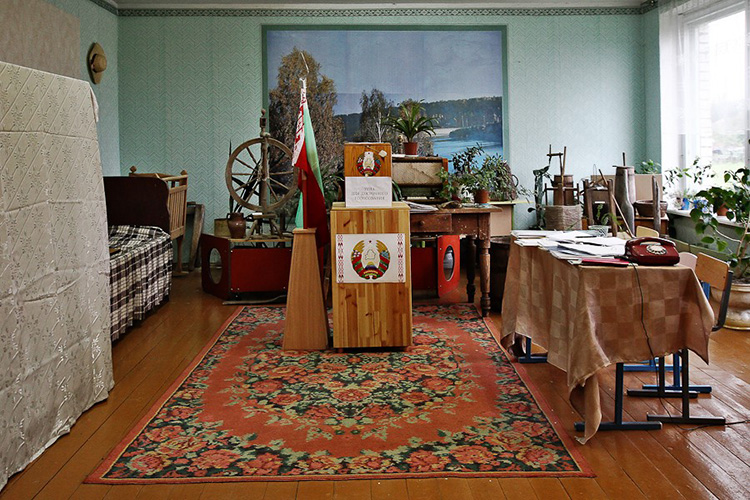
Siarhei Hudzilin’s photography from the series «Polling Stations Interiors»
But really … I would want to observe… a more literary language. I would want „the trasyanka“ of our life to be transformed into something more complete… Although, maybe this chaos of multiculturalism is actually our own kind of a unique thing! …
In this case, it must be properly described and explained, and something common can later be built based on it. With decisions made later, in the future. Generally, in all the areas».
Interviewed and translated by Volha Bubič, 2014
Photos © Siarhei Hudzilin
Opinions of authors do not always reflect the views of pARTisan. If you note any errors, please contact us right away.



